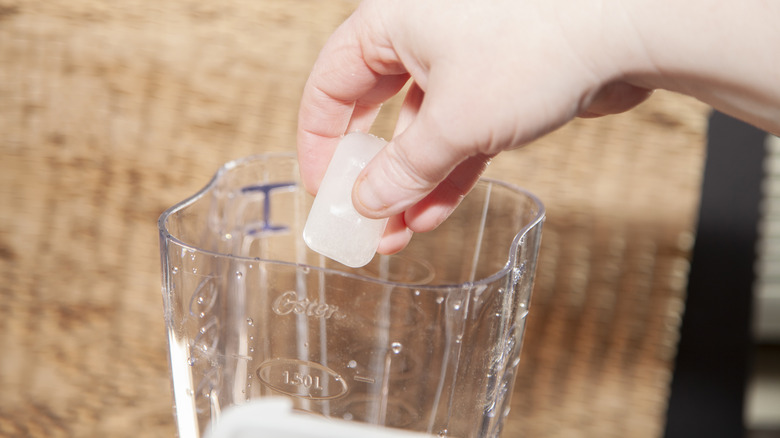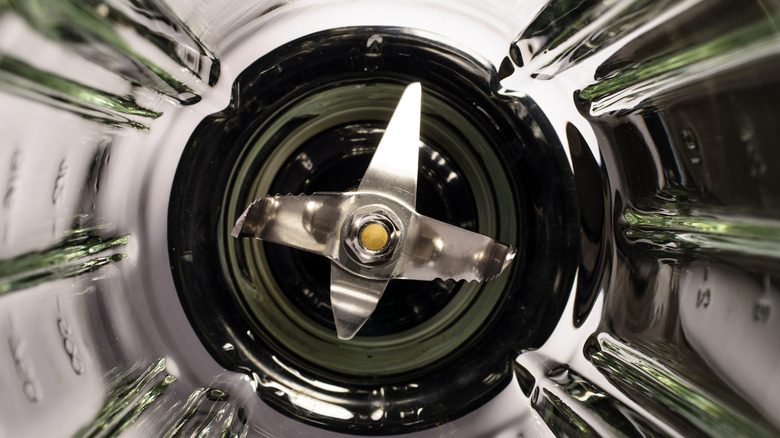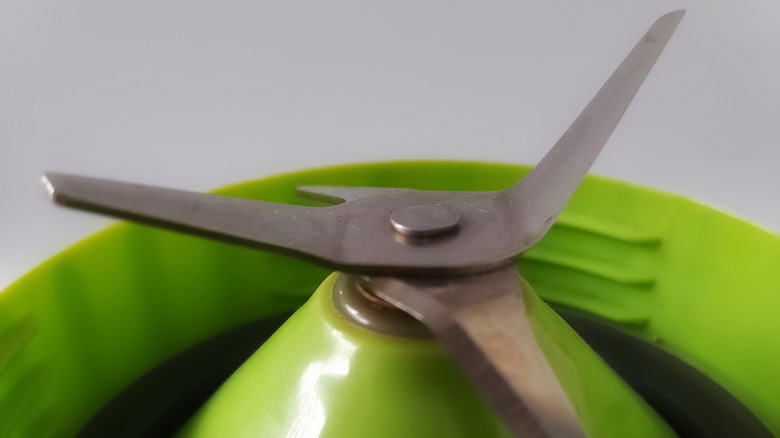Debunking The Myth Of Sharpening Blender Blades With Ice
Dull blender blades can definitely put a damper on your day. One minute, you're looking forward to a morning smoothie, and then the next, you're sipping on a chunky, unpleasant breakfast because your blender couldn't hack it. There are lots of home remedies for sharpening your blender, including using ice cubes to whip the blades back into shape. But does it work? Sadly, using ice is just a myth (and might do more harm than good).
If you've heard this rumor, it's important to keep in mind that there have been no studies on which methods (beyond sharpening tools) work for blenders, so most evidence out there is anecdotal. That said, many household blenders are more likely to malfunction or become dented if you put ice in them alone, especially large chunks. Adding a liquid or smaller ice can help with this, but then you probably won't be doing much to change the blades' sharpness. Some blenders on the market can handle ice, but it's not always a given.
Other approaches that likely won't work
Ice isn't the only item out there that has been recommended for sharpening blender blades. For instance, rice and eggshells are also thrown out there as possible solutions. The idea behind these solutions is that each item is abrasive enough to smooth dents in the blade (otherwise known as honing). Still, it's more likely that these things do nothing to help with sharpness because the proper honing technique involves moving the blade's edge deliberately in one direction and then another. It's hard to achieve that with blades whirling around inside the blender. Still, there is some anecdotal evidence that uncooked rice works to remove dirt or residue that might be making your blades dull, which is why it's also a popular hack for coffee grinders as well. Eggshells could also damage your blades because of the connective membrane inside them, so you should also never throw eggshells down the garbage disposal.
Sharpening knives with aluminum foil is a popular hack out there, so it's also touted as a solution for your blender. However, this method is also considered effective for only slightly dull blades because it is actually only removing grime or dirt and not because it is honing the steel. No matter what material you are trying to use (whether it's ice cubes, rice, foil, or anything else), it needs to be harder than the blade itself to properly hone or sharpen the blade.
What you should do instead
First, you should determine whether your blender actually needs sharpening. Some blenders are designed with dull blades because they do not need to be sharp to blend effectively. On the contrary, most blenders blend because of the power and speed at which the blades are moving and the downward whirlpool effect that the movement creates. Still, some models employ sharp blades, so there are ways to keep their edges in shape. If this is the case, you will need a whetstone or sharpening tool – basically anything you would use for sharpening knives. Removing the blades is also an excellent time to disassemble and deep clean your blender carefully –– clean blades will generally perform better.
Your sharpening technique will depend on the tool you use, but in general, it is best to match the same angle on the blade that is already there and to use smooth motions away from your body on one side of the blade and then the other to sharpen. When you're done, you can rewash the blades (in case metal shavings are left behind) and then reassemble your blender. If you find that your blender does not easily come apart, consider referring to the owner's manual for instructions, take it to a repair service, or opt to replace the blender if it's particularly old.


